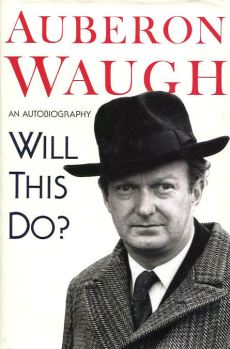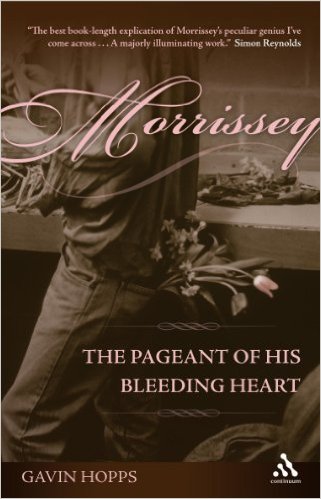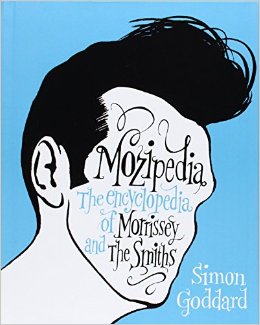 Will This Do? The First Fifty Years of Auberon Waugh, Auberon Waugh (Century 1991)
Will This Do? The First Fifty Years of Auberon Waugh, Auberon Waugh (Century 1991)
If the Holocaust continues to increase its hold on the hearts and minds of all right-thinking folk, it seems quite possible that Auberon Waugh’s body will one day be dug up and put on trial for the disrespect shown by its former occupant, before being ritually burnt and scattered to the four winds.
Unless, that is, other professional victims get their hands on it first. AW told jokes about the most inappropriate subjects, from the “three million years of persecution” suffered by the Jews to the graves of still-born West Indian infants, and remarked of himself that his “own small gift” was for “making the comment, at any given time, which people least wish to hear” (pg. 215). Contemplating his use of this gift and “all the people I have insulted”, he later admits to being “mildly surprised that I am still allowed to exist” (229).
But it is the august author of his existence who will concern more readers, and certainly no aficionado of Evelyn Waugh can afford to neglect the autobiography of his eldest son. Waugh père put on a performance for the world and even for his friends, and this book is rather like seeing behind the scenes at a play. Readers will see EW from the wings, as it were, though they should always remember that AW inherited his father’s love of fantasy as well as much of his literary talent. Of one episode from his military service AW remarks: “I have told the story so often now that I honestly can’t remember whether it started life as a lie” (105).
This may also apply to the infamous “three bananas” devoured with sugar and “almost unprocurable” cream by his father under the “anguished eyes” of his children, to whom the fabled fruit had been sent in the depths of post-war austerity (67). The story is a dramatic way of illustrating AW’s judgement that EW’s “chief defect was his greed” and of explaining why AW “never treated anything he had to say on faith or morals very seriously.” It may be untrustworthy for that very reason.
It may also have been an act of posthumous revenge, working off some of the resentment and even dislike AW felt for his father before leaving home. In 1944, dragged away from his games to meet EW, who was home on leave, AW “would gladly have swapped him for a bosun’s whistle” (30); later, he faced the problem of living with a father who set the emotional climate of his entire household:
The dejection which was liable to seize him at any moment — sparked off by little more than a bad joke, a banal sentiment, a lower-middle-class epithet — made him awkward company at times. When he was in the grips of a major depression, or melancholy as he called it, he was unendurable. (36) … He was a small man — scarcely five foot six in his socks — and only a writer, after all, but I have seen generals and chancellors of the exchequer, six foot six and exuding self-importance from every pore, quail in front of him. When he laughed, everyone laughed, when he was downcast, everyone tiptoed around trying to make as little noise as possible. It was not wealth or power which created this effect, merely the force of his personality. (43)
But he did not think his father could have been “pleased by the effect he produced on other people”, and concluded that he “spent his life seeking out men and women who were not frightened of him” — and then usually getting drunk with them, “as a way out of the abominable problem of human relations” (43). Their own relations were marked by “distinct cordiality” (112) in the last five years of EW’s life: after suffering a near-fatal accident on National Service in Cyprus, AW even wrote “a maudlin, deeply embarrassing letter telling him how much I admired him” and sent it to his bank to be released “in the event of my predecease” (112).
Despite this, EW’s death “lifted a great brooding awareness not only from the house but from the whole of existence” (186). That presence played encores, however, as when AW experienced misgivings about his apostasy from Catholicism:
It is hard to believe that these kindergarten assemblies bear much relation to the ancient institution of the Church as it survived through the Renaissance. The new Mickey Mouse church … is surely not a reduction of the old religion. It has nothing to do with it, being no more than an idle diversion for the communally minded. Or so it seems to me. But whenever I have doubts, it is my father’s fury rather than Divine Retribution which I dread. (pg. 187)
These passages will reinforce the image of EW that readers bring to the book; elsewhere, AW may contradict it. It’s surprising to read how EW entertained the “Stinchcombe Silver Band” every Christmas at Piers Court and got “great roars of laughter out of them as he ribbed them about their tipsiness” (49). But AW claims that while the “common touch was certainly not something he cultivated … in rather a surprising way, when he needed it, he had it”. He then defends EW against the accusation, levelled by the real-life model for “Trimmer” of the War trilogy, that EW had been “detested by the men who served under him”. Not so: the reverse was true, according to correspondence AW received after reviewing Trimmer’s autobiography for Books and Bookmen.
The mischief-making apparent in that choice of reviewer is something else that readers may find enlightening, because Will This Do? is describing a particular British class and culture. On his National Service AW saw two Wykehamists rejected by their school-fellows after failing the War Office Selection Board. He noted “the ruthlessness of the British establishment” and the “cruelty” that “flourishes in the law and wherever public school Englishmen are given power over each other”.
AW reveals the limitation of his perspective here, perhaps, because ruthlessness and cruelty are not a monopoly of public school Englishmen, but his readers’ understanding of his father’s novels may be deepened by his descriptions of those things in action, his own amongst them.
AW also offers insights into Catholic psychology. When he reveals one of his father’s secrets, he has to cover up his role after the secret finds its way into the papers:
‘It was not I who sold you to them, although I have a theory as to who did.’ Readers will observe how, with typical Catholic casuistry, there is no actual untruth in this letter, as I had not actually sold the information to Rose, merely told it to him by way of passing the time of day. (127-8)
And he muses on what might have been had he taken a different degree:
My exhibition [scholarship examination] had been in English, but my father advised me that this was a girl’s subject, unsuited to the dignity of a male. Lord David Cecil had been rather upset when I told him this, staying at Portofino before my first Oxford term. I had forgotten he was Professor of English at Oxford. … Perhaps I should have stayed the course in English, instead of finding myself lumbered with this rubbishy PPE [Philosophy, Politics and Economics]. (148)
For the immediate future, however, the most significant passage in the book may be a description from AW’s National Service during the Cyprus emergency of 1958, when the island’s Greek inhabitants wanted union with Greece and its Turkish inhabitants wanted secession. A party of Greeks were “dropped on the Nicosia-Kyrenia main road” to make their way home after “questioning and document-checking”. Unfortunately, they were dropped near a village of Turks, who mistook them for a war-party:
The Turks poured out of the village and quite literally hacked them to pieces. It was a very messy business. Nine Greeks were killed and many others mutilated. Hands and fingers were all over the place and one officer wandered around, rather green in the face, holding a head and asking if anyone had seen a body which might fit it. (103-4)
EW ended his preface to Alfred Duggan’s Count Bohemond (1964), set during the Crusades, with the claim that “It is highly appropriate that this, his last work, should end with the triumph of Christian arms against the infidel.” His own son saw the conflict beginning again, as predicted by Hilaire Belloc, the “terrifying old man with a huge white beard” (16) whom AW met in extreme youth in his maternal grandmother’s house at Pixton. Will AW’s maturity prove to have fallen in the sun-lit patch between the shadows of the Second World War and serious racial and religious conflict in Europe?
If it does, EW’s shade may raise a shadowy glass in Elysium. As Britons can see from its vigorous survival in Northern Ireland, religion thrives on hatred and conflict and, Machometo adiuvante, the Church may yet throw off the leaden cope of The Second Vatican Council. Despite the despair such reforms brought to his father before his death, AW’s final, objective judgment is that “Evelyn Waugh detested the modern world but did rather well out of it” (123).
He himself, blessed with a more equable temperament and unridden by the demon of “melancholy”, could be said to have done even better but to have left a less enduring mark. Nevertheless, one of the charms of his autobiography is that it preserves some Evelynian ephemera: had they not been recorded here, history might have lost the handwritten Augustan prose instructing visitors on the vagaries of a lavatory at Piers Court and the Yardley’s Lavender Hair Tonic that EW put on his head when he changed for dinner (43).
EW writes in The Loved One (1948) of how death strips “the thick pelt of mobility and intelligence” from the body, leaving it “altogether smaller than life-size”. Will This Do? preserves a few tufts of his own pelt and although as the years pass the book will, alas, be read increasingly out of an interest in the father, not the son, AW had no illusions about his own importance in the scheme of things. It’s true that he may have laid booby-traps of fantasy and exaggeration in the stories he tells about his father, but what more appropriate rite of filial pietas could he have performed?
[A review first published in 2006.]
Read Full Post »
 Two Sides to Every Glory: AC/DC: The Complete Biography, Paul Stenning (Chrome Dreams 2005)
Two Sides to Every Glory: AC/DC: The Complete Biography, Paul Stenning (Chrome Dreams 2005)

